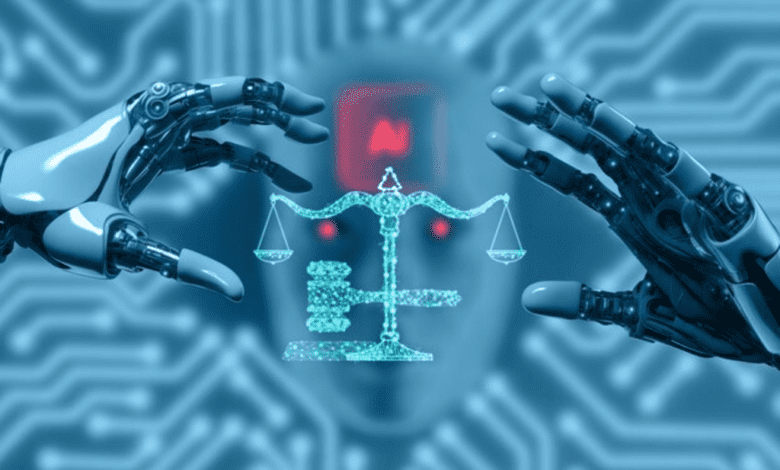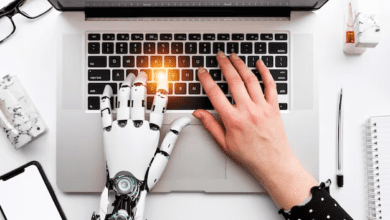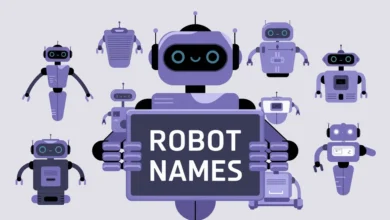
Understanding The Keeper AI Standards Test: Making AI Better
In the world of AI, where new ideas mix with ethics, the Keeper AI Standards Test is really important. It’s like a big rock that keeps AI systems ethical. This special way of checking AI was made by a bunch of smart people working together. It helps make sure AI follows the rules and is used responsibly. In this article, we are going to take a close look on The Keeper AI Standards Test. Whether, what it stands for, it uses, what comes next, and more things.
The Story Behind the Keeper AI Standards Test
People had visualized that AI had some problems. We are all merely dependent on AI whether in healthcare, business development and e.t.c. But there were questions such as, fairness, responsibility, understanding, privacy integrity and reliability. Everybody realized that there must be a better and more appropriate way of addressing such issues. A selection of persons gather and developed the keeper artificial intelligence standards test.
What’s It Used For?

The Keeper AI Standards Test helps check if AI technology is being fair and good. It’s used by people who make AI, policymakers, and those who use it, to make sure AI follows the rules and is used in the right way. With this test, people can check different things about AI. They can see if it’s easy to understand how it works and if it treats everyone fairly. Also, they can check if creators are responsible for it, if it keeps people’s information safe, and if it works in different situations. This helps them decide how to make and use AI in the best possible way.
How Does It Work For?
The Keeper AI Standards Test works by looking at AI systems using rules about what’s right and wrong. It checks if AI is clear about how it works and if it treats everyone fairly. It also sees if the people who make AI are responsible for what it does and if it keeps people’s information safe. This test helps people understand if AI is good and helps them decide how to make and use it.
Key Principles of Ethical AI Development
The Keeper AI Standards Test is underpinned by a set of core principles that serve as guiding beacons for ethical AI development:
1. Transparency: Artificial Intelligence need to be transparent about their processes and the actions.
2. Fairness: It is imperative to address the question of whether or not AI is bias towards the black community, women, or people of lesser means.
3. Accountability: This includes design accountability. Those who create the AI systems should be held legally and morally accountable for what the system does.
4. Privacy: AI users must ensure the privacy of people’s information in case they need to be involved in the AI functioning process. This means following best practices. These practices include having guidelines concerning ways of acquiring data, the place to store it, and ways to utilize it.
5. Robustness: For what concerns the application of AI systems, these should work well. They ought to be strong enough to overcome various situations. They should not compromise even when there are obstacles or threats.
Applications of the Keeper AI Standards Test
The Keeper AI Standards Test is used in different parts of making AI:The Keeper AI Standards Test is used in different parts of making AI:
1. Before making AI: It is necessary to underline that people define how specifically an AI should behave and include it into the design.
2. While making AI: Using the experiments on Keeper AI Standards Test happens. It allows developers to assign proper rules to ensure proper AI behavior. They also make a check as a routine to see if anything wrong.

3. Before using AI: AI and technology made organizations ask whether the rules are being followed and if they are ethical.
4. After using AI: Some viewers monitor AI to find whether their are some new issues and to find ways of solving them.
International Perspectives and Collaboration
The Keeper AI Standards Test solutions are global. It works where there are many people of diverse cultures, legal systems and manner of perceiving justice. It realises that it needs to cooperate with individuals from all over the globe. Through interaction, the Keeper AI Standards Test could learn from people of different places. It learns from their different concepts and approach to solutions to the same problems. This also make it quite fair and more considerate of the needs of all the individuals involved.
Community Involvement
AI’s stakeholder should seek help from AI engineers and the general society to make it ethical. Individual and group discussions in community meetings, citizen forums, and parlance happen. They enable individuals to give their opinions on AI. The rules of the game in the Keeper AI Standards Test change according to what people do, and the bot is also a listener. This makes the society to have confidence and welcoming to AI.
Learning and Strengthening Skills
It follows that forcing AI to become ethical requires informing people about the difference between right and wrong. As such, training and educational tools can effectively assist in this regard. If people learn more about what’s right and wrong through education, the Keeper AI Standards Test can help them make the right choices about AI.
Evaluating Ethical Implications
When we add checks for ethics to the Keeper AI Standards Test, people can see how using AI might affect things. These checks look at society and culture to find problems that need fixing. Doing these checks helps organizations handle problems early. It also helps them stop bad things from happening, which makes AI better and safer.
Improving Continuously
As AI gets better, the rules about what’s right and wrong with AI also change. So, we need to keep making the Keeper AI Standards Test better too. This means asking people for feedback, watching how AI behaves, and updating the rules to match what’s happening in AI ethics. If everyone works together, the Keeper AI Standards Test can stay helpful and make AI use better and safer.
Adding these extra things to the Keeper makes sure the AI Standards Test gets better. The Keeper AI Standards Test checks everything, helps everyone, teaches people, finds problems, and always tries to be great. This helps people use technology in a fair and right way, making sure AI is used well.
Challenges and Future Directions
The Keeper AI Standards Test helps make AI better behaved, but there are still tough problems:
1. It’s Complicated: There are lots of things to think about when it comes to ethics and AI. So, we need to keep making the Keeper AI Standards Test better to deal with these new challenges.
2. Following the Rules: Making sure the Keeper AI Standards Test follows the laws and rules is hard.
3. Working Together: Many experts, like ethicists, lawyers, and computer specialists, need to work together. Also, sociology can help make the Keeper AI Standards Test stronger.
Conclusion:
In short, the Keeper AI Standards Test is a big step towards making AI behave well. This means if we follow the rules and think about what’s right and wrong with AI, we can handle its challenges. As AI becomes more important, the Keeper AI Standards Test makes sure it’s used in a good way that helps everyone.
Frequent Asked Questions
What’s the point of the Keeper AI Standards Test?
This way the technology is used in a proper way which is the aim of the Keeper AI Standards Test. It ensures the AI systems to see that they are adherent to basic principles namely fairness, honesty, responsibility, privacy, and strength.
Why is it important for AI to be clear?
Awareness of the workings of artificial intelligence can assist people to pay more trust in it. They can know who made what decision and that can help prevent bias or other issues.
How does the Keeper AI Standards Test help with fairness?
The test aims at determining whether the AI used is capable of being impartial in its operation. It looks for any bias, which is to say that it searches for cases in which someone is inappropriately unkind to particular people. It helps prevent a certain few from monopolizing the vacancies available in the company.
What’s the point of accountability in AI?
Accountability implies that the decision-makers and the end-users of the AI technologies must take ownership of it. This maintains honesty and equity and also guarantees that in a situation that something is incorrect, it may be corrected.
Why do AI systems need to be strong?
Being strong means AI can work well in different situations, even when there are problems. This makes AI more useful and reliable, so it can help more people.



